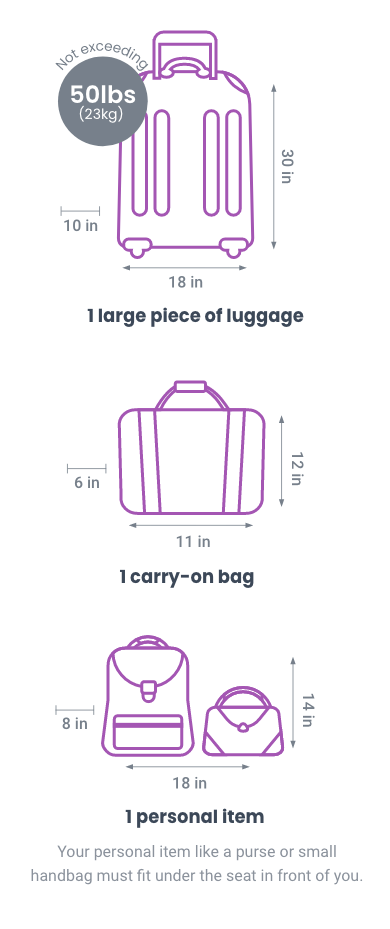About Yosemite
Overview
Yosemite is a bucket-list National Park and this trip is a bucket-list experience. One of the most amazing aspects of visiting Yosemite is learning about its glacial history. Your Guide will lead you through this history throughout the week, noting evidence such as sheered domes, mountains of moraine, massive boulders perched in impossible positions, and other unique features. You’ll also learn about Yosemite’s wildlife, Native American history, and early settler history. This trip is operated by the Wildland Trekking Company, an authorized guide company in Yosemite National Park.
For camping itineraries, please note, this is a participatory camping trip, where all travelers will assist in setting up camp and cooking meals. Guides will teach you the best methods for quick set up and take down of tents and will lead the cooking, providing clear instructions and oversight. If you’ve never set up camp or cooked outdoors before, this is the perfect opportunity to learn under expert supervision!
Closest Major City: Fresno, CA
Time Zone: Pacific Daylight Time (GMT-7)
Pack Weight: 10-15 pounds
Emergency Number: 911
Outlet: Type A
.jpg)
.jpg)
Packing List

Weather
YOSEMITE VALLEY WEATHER| Month | High | Low |
| January | 48°F | 28°F |
| February | 53°F | 30°F |
| March | 58°F | 33°F |
| April | 65°F | 37°F |
| May | 73°F | 44°F |
| June | 82°F | 50°F |
| July | 90°F | 56°F |
| August | 90°F | 55°F |
| September | 84°F | 50°F |
| October | 72°F | 41°F |
| November | 57°F | 32°F |
| December | 48°F | 27°F |
Training Ideas
If you have access to hiking trails and a schedule to accommodate it begin walking and hiking in hilly/steep terrain. Nothing prepares you for a backpacking trip better than the activity itself! Try to get out at least 3 days a week. Start with short hikes (1-hour in length) with a light daypack. From week to week build the length and difficulty of your hikes and gradually increase your pack weight until you’re comfortably able to hike 6-8 hours a day carrying the weight you’ll have on your trip (refer to your trip packet for exact pack weight). It is ideal to begin your training at least 12 weeks prior to your trip. Also, be sure to use the boots you’ll have on your trip to break them in. The following is how a moderate program may look:
- First week of training
- Tuesday: one-hour hike with a daypack
- Thursday: one-hour hike with a daypack
- Sunday: 2-hour hike with a daypack
- Two weeks before the trip
- Monday: 3.5-hour hike with a 20-pound pack
- Wednesday: 2-hour hike with a 20- pound daypack
- Thursday: 3.5-hour hike with a 20-pound pack
- Sunday: 7-hour hike with the weight you’ll have on your trip
There are many other activities that are easily incorporated into your daily life to build your overall fitness. Cross-training is also important to strengthen opposing muscle groups and it helps to avoid over-use injuries.
Supplemental training ideas include:
- Climb the stairs at your office, house, park, or neighborhood with a backpack. Stair climbing is a fantastic way to simulate backpacking in hilly or steep terrain.
- Bike to work or when running errands. Bike around town or on country roads outside of your town/city. Cycling is a great way to build endurance and strength in your legs.
- Gym activities include step aerobics, treadmill, bicycling, or elliptical trainers to name a few. A modest weight training program focusing on the muscles that support the ankles, knees, back, and shoulders is also beneficial.
- Swimming is a great way to build endurance and cardiovascular fitness and is easy on the joints.
- Walk to work instead of driving. Run your errands by walking and carrying your groceries home in a backpack.
- Yoga and/or Pilates classes can build strength throughout your body while also improving your flexibility.
- Intramural sports.
- Jogging is another option, however, if you are not a regular runner it can easily lead to injuries that backpacking may then exacerbate. Undertake a jogging routine with care.
Tipping
Tipping Suggestions: Tips provide supplemental income, and, while not mandatory, are greatly appreciated. If the local teams have added to the experience, please reward them.
| Guides | USD $20-25 per person/per day | |
| Airport Transfer Drivers | USD $3-4 per person/per day |
FAQ
Will I get access to water that is safe to drink? Water will be available at campsites and some trailheads
What is the disposal process for waste? There will be places to dispose of trash at campsites. Otherwise, it will be packed out.
Do you recommend travel insurance? While not required, we highly recommend all Travelers get travel insurance for their trip to protect themselves from the unknown! Check out travel insurance options from our partner, worldnomads.com or from a provider of your choice.
How much should I pack? As we will be using shared transfers and spaces throughout our tour we recommend all Travelers pack as lightly as possible. Please take a look at our luggage restrictions below.
Will we have an experienced Guide? Your tour will be led by a trained, experienced professional with a solid guiding background, years of personal wilderness and hiking experience, medical certifications, and a passion for leading people into breathtaking landscapes. Important note: Guides work daily shifts from 5 a.m. to 9 p.m. During off hours (9 p.m. to 5 a.m.) the Guides’ time is their own, and they are free to sleep, rest, take personal time, postpone guest requests until the next morning, and any other legal, reasonable activity people engage in when not working. We ask all guests to respect the Guides’ off-duty hours by not waking or asking anything of them unless there is a true emergency. Also, state law requires that employees receive an uninterrupted 10-minute break every four working hours, so Guides are required to take four 10-minute breaks between 5 a.m. and 9 p.m.
Do you provide any gear? We provide top-of-the-line backpacks, tents, sleeping bags, sleeping pads, trekking poles, stoves, cookware, bowls, cups and utensils. All our Guides carry company-issued first aid kits, satellite phones (for emergencies only) and epinephrine kits (for allergic emergencies).
What tents will we be using? Typically, we have larger basecamp-style tents that we use (average 96’’x90’’, 22 square feet).
What about food? We provide a diversity of foods containing the necessary nutrition for sustained energy output. Meals are made from staples that travel well in the backcountry - rice, pasta, lentils, beans, couscous, oatmeal, granola, etc. Meals are also supplemented with trail foods such as crackers, cheese, granola, energy bars, fresh and/or dried fruit, and energy drink mixes. We regularly accommodate vegan, vegetarian, kosher, and non-gluten diets and will make adjustments for food allergies. In addition to your personal belongings, you will be responsible for carrying a portion of the food.
Important note: It’s critical that you include your dietary needs in your traveler form - it’s too late once you’ve arrived.
Will I have access to Wifi? No, wifi in the parks is unreliable and not guaranteed. Take this time to unplug and enjoy nature and adventure with your fellow Travelers.
Luggage Restrictions
.jpg)


